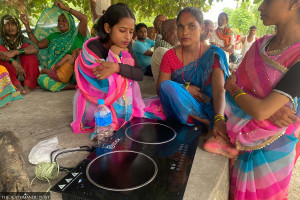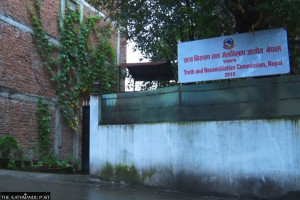Money
Traders now offer .999 fine gold
Local bullion traders are now able to offer .999 fine gold as banks have started importing gold with a purity of 24 carat.
Local bullion traders are now able to offer .999 fine gold as banks have started importing gold with a purity of 24 carat.
Likewise, the Federation of Nepal Gold and Silver Dealers’ Association (Fenegosida) has been issuing reference prices under the names fine gold (99.99 percent purity) and standard gold (99.50 percent purity).
The umbrella organisation has been authorised to publish the reference price of gold in the domestic market.
Earlier, the federation used to publish the price of 24 carat gold under the name Chhapawal which is 99.50 percent pure. Similarly, 22 carat gold called Tejabi has a purity of 92 percent.
Mani Ratna Shakya, past president of Fenegosida, said they started publishing prices of hallmark gold after Nepali banks started importing gold with a purity of 99.99 percent. According to him, banks had been importing 99.50 percent pure gold in the past.
“As NIC Asia has recently started selling hallmark gold in the domestic market, we have been forced to revise the modality of our reference prices,” Shakya said.
In December 2010, the government barred individuals from importing gold after foreign exchange reserves started depleting dangerously. Only commercial banks were permitted to import gold with a limit of 15kg daily.
Recently, Nepal Rastra Bank amended the guideline on gold imports and sales and instructed banks to import pure gold only. “Banks have to import gold marked with a specific bar ensuring the purity,” the central bank said.
Shakya said the new provision had introduced a new era in trading hallmark gold in Nepal. He said that most traders were unable to ensure the standard of the hallmark gold used in jewellery.
“Due to lack of equipment and skilled manpower, many small gold traders are not in a position to maintain the standard,” said Shakya, adding that the need to mix chemicals with gold while making jewellery could make it difficult for jewellers to determine the fineness of the metal used.
Prices of gold jewellery in the international market are based on the purity of the gold used, Fenegosida said.
According to the association, 24 carat gold is 99.99 percent pure, 22 carat is 91.6 percent pure, 18 carat is 75 percent pure and 14 carat is 58.5 percent pure. However, local jewelers have been selling gold as 24 carat and 22 carat.
Shakya said Fenegosida was considering publishing bullion prices based on purity instead of the carat system. “This is expected to address the demand of consumers who are willing to pay according to the purity level of the metal,” he said.
Bishwo Babu Pudasaini, director general of the Nepal Bureau of Standards and Metrology, said traders were free to set prices of jewellery based on the purity of the gold used.
Spokesperson for the Supplies Ministry Surya Prasad Shrestha said the ministry was planning to introduce variable gold prices. “The new directive on gold and silver monitoring that the ministry has been creating will fix the pricing mechanism for gold of varying purity,” he said.




 20.38°C Kathmandu
20.38°C Kathmandu














